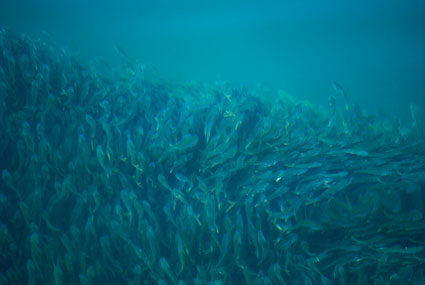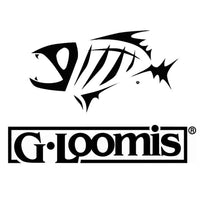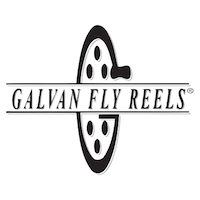
In the fall season many anglers have turn their attention to the nearshore waters along the east coast in anticipation of the fall mullet run. The mullet is the fall baitfish migration but anglers are most interested in the predators that follow them south.
Abundant Baitfish
Forage fish of every size pass within a few hundred yards of the local beaches, creating a feast for the hungry predators and excellent opportunities for fly fishermen. Anchovies (glass minnows), menhaden, and mullet skirt the coast in huge numbers, so it pays to have a wide variety of fly patterns and sizes available. Even though mullet may appear to be the focus of this season, many anglers target glass minnow schools because they’ll attract predators of all sizes. Their astronomical numbers and diminutive size make them easy targets. These annual gatherings create an eat or be eaten situation, so it’s not unusual for more than a few unlucky fish to become shark, tarpon, or snook food while they gorge themselves.
Target species
Shark, tarpon, jacks, snook, ladyfish, Spanish mackerel, bluefish, and occasionally a bonito may be part of the feeding frenzy and picking a target can be challenging. Redfish and seatrout can also be seen as you get closer to inlets. This variety can be a blessing or a curse depending on how you look at it. Rest assured that if you get the location and timing correct, dull moments will be few and far between. Tarpon and snook are likely to be the most sought after species because this is the one time of year they’re gathered in large numbers, in casting range of shore, and in feeding mode. Enjoy the variety and mind-bending action while it lasts.

Flies
Streamers and baitfish imitations of all types can and will be productive at some point, depending on the prevalent forage species. It pays to have a well-stocked box with a good variety of patterns. Clouser Minnows, Crystal Schminnows, EP Micro Minnows, EP Mullet, EP Peanut Butter, Seaducers, Crease Flies, Deceivers, Polar Fiber Minnows, Surf Candies, and even larger shark patterns will all produce well. Just be sure to have plenty on hand because cutoffs are frequent when toothy critters show up or when a hooked fish gets eaten by something larger. The circle of life is on full display during the run.
Tackle
Locations
All the beaches along the east coast will experience some level of activity during the run but there are a few locations that deserve highlighting. Ponce Inlet is a major exit point for baitfish looking to enter the open Atlantic as is Sebastian Inlet at the southern end of our region. Most of the fly fishing opportunities at these two locations are north or south of the actual inlets rather than inside the channels themselves. Playalinda Beach, Cocoa (south of the fishing pier), Satellite, Indialantic, Melbourne, and points south to Vero all have good access and produce year after year.
Tactics
This is a run and gun fishery if there ever was one. The object is to find areas with feeding activity or with bait schools in the surf. Birds diving or bait schools exploding are obvious signs of feeding activity, as are shorebirds walking the surf line picking up stranded baitfish. Work these areas thoroughly before moving on. Although the bait does move through in waves, it’s best to move immediately if the activity level drops at your current location. Casting over water with little to no visible activity can be an exercise in frustration and a waste of time. This is still sight-fishing and although you may not be presenting the fly to a specific fish, you should be casting to areas of activity thus increasing the chances of a solid hookup.
Weather Considerations
The weather this time of year can be fickle, with tropical systems passing through regularly. Check out a few of the following websites as you look for favorable conditions, which include light winds and smooth surf. Keep in mind that the nearshore waters may be churned up and littered with debris that was pushed ashore by the passing system, making fishing conditions difficult to nearly impossible. Wait a day or two for things to clear up and favorable conditions to return.















Comments